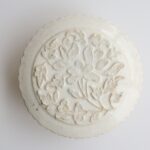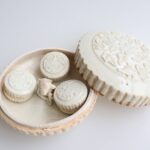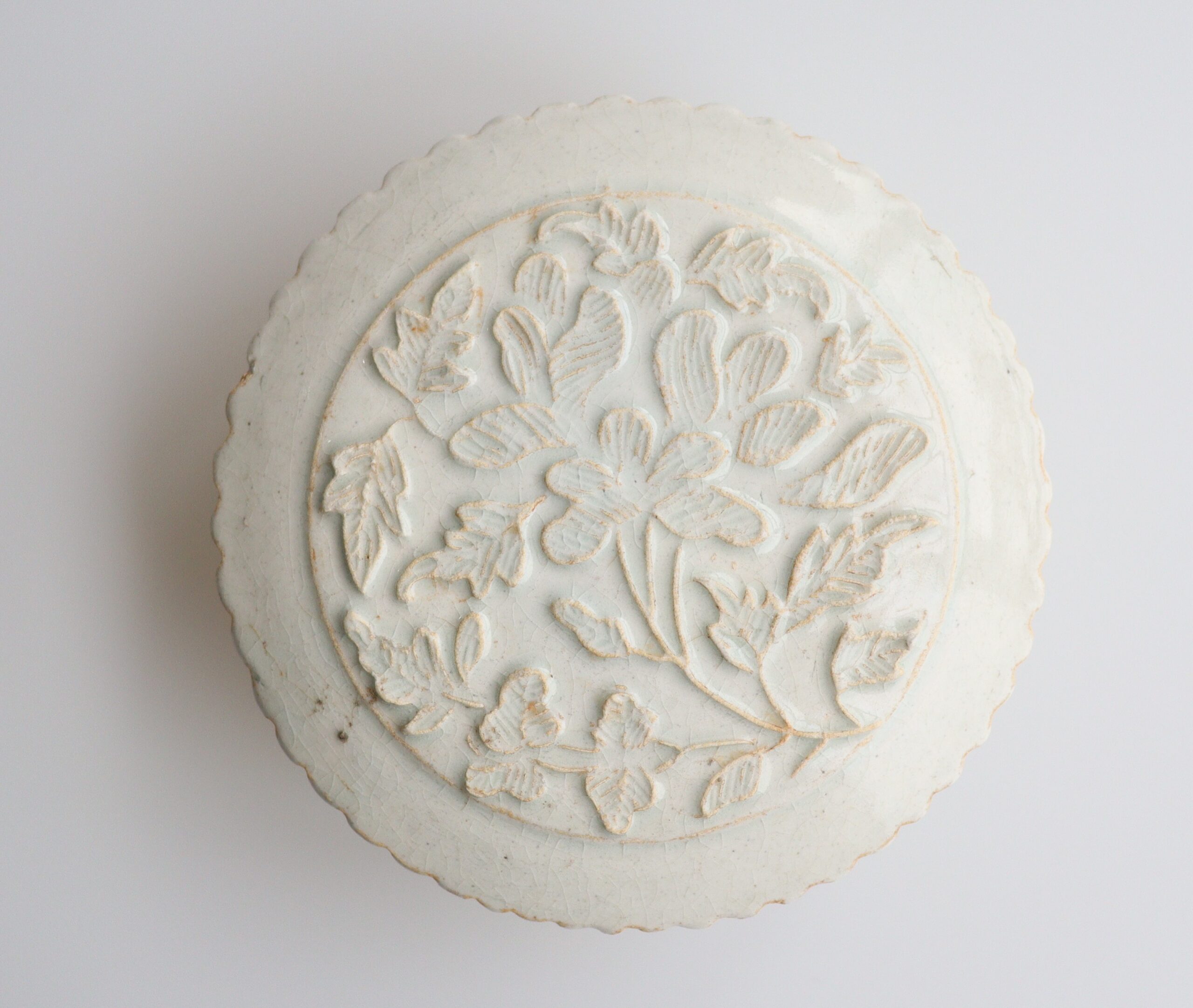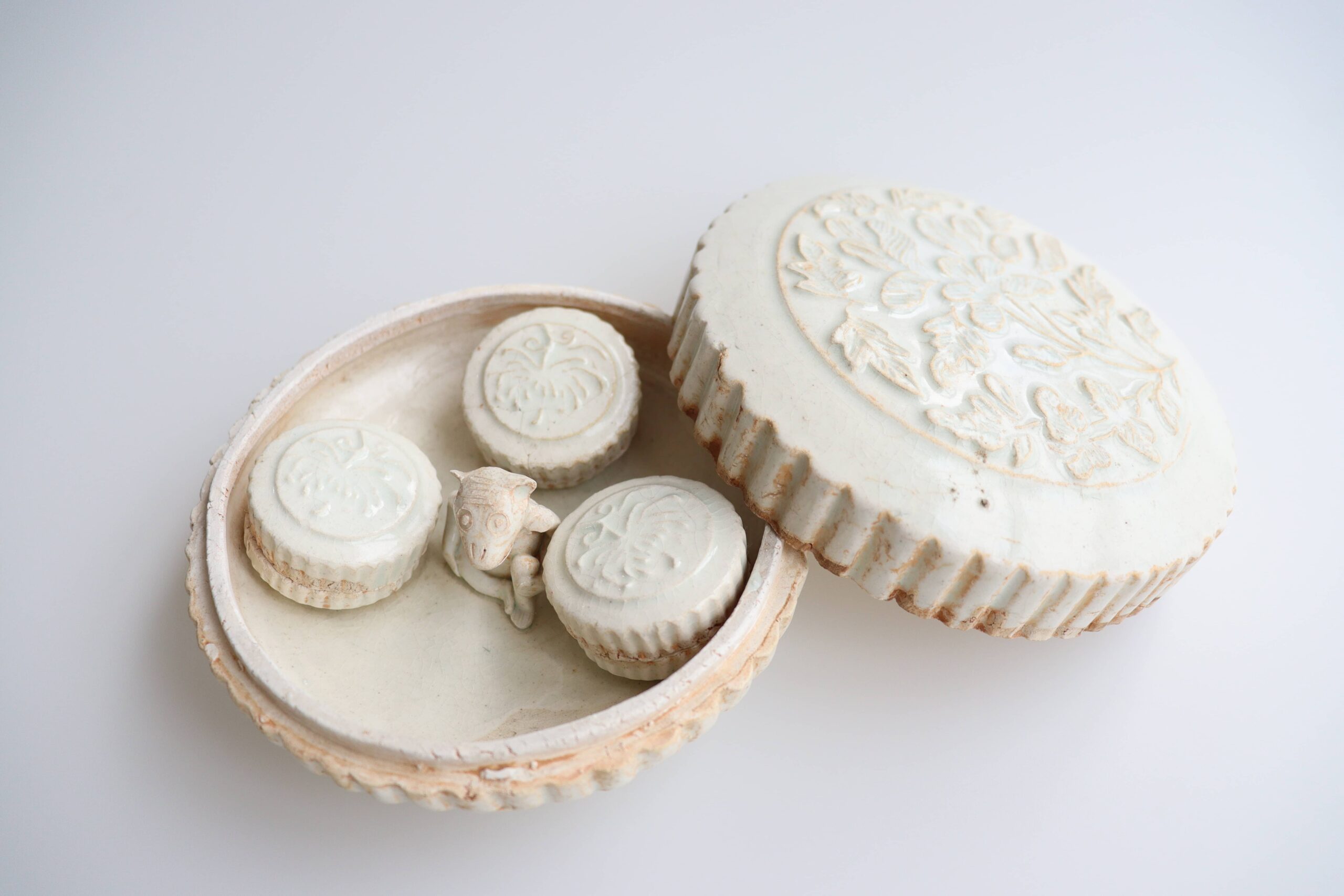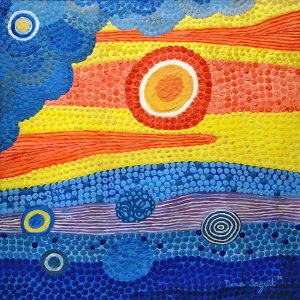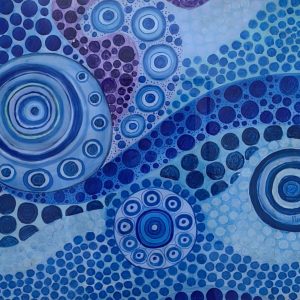A LARGE MOLDED QINGBAI BOX AND COVER SOUTHERN SONG-YUAN DYNASTY (1127-1368)
₱85,000.00
A LARGE MOLDED QINGBAI BOX AND COVER
SOUTHERN SONG-YUAN DYNASTY (1127-1368)
D: 7.5 in
₱85,000.00
Share
This finely potted qingbai cosmetic box with neatly lobed sides was intended for storing cosmetics and as such would have been used on a daily basis. The cover is decorated in relief with a central roundel of foliate design (peony).
The inside of the box also shows a seated monkey (hou) at the center surrounded by three miniature molded boxes and covers for storing make-up.
These types of cosmetic boxes were very popular in the Song court and among the Chinese literati. The peony (mudan) is the symbol of prosperity, wealth, honor and also of love and affection. It is known as the flower of ‘wealth and honour’, and was traditionally a token of love and exchanged as a farewell gift. The depiction of a monkey conveys a wish for high rank, as the Chinese word for monkey (hou, 猴) is a homophone for “marquis (hou, 侯),” or “commander.” The meaning of this shape and decoration made the box a perfect gift for court or high-rank officials. This popular motif would have been used to confer good wishes to ambitious individuals within officialdom.
Both men and women use these cosmetic boxes for storing and carrying not only make-up items such as kohl, dyes and perfumes, but also for medicine, incense, seal paste, salt and herbs. They were used to store pigments for the make-up, and also the perfume sachet, spices, and other precious stuff.
Ceramic cosmetic boxes changed much of their shapes and patterns through Tang, Five Dynasties to Song periods. During the Tang period, either green or white glazed, the boxes came mostly without decoration, occasionally carved or incised. During the Five dynasties, boxes fired by Yueyao sometimes appeared to have incised line of flowers and plants as decoration. This method of decoration were still used in Song period. Moreover, especially in the Song period, cosmetics boxes no matter judging from design or decoration, they were full of cultural significances. Precisely speaking, the owners of these boxes with different designs reflected their different levels of social status.
Ref:
Provenance:
Private Collection, Hong Kong (1960s)

